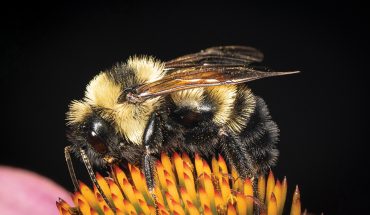by Tony Avent
illustration by Ippy Patterson
I’ll never forget the day in June 1997 when I met Canna ‘Phasion’ in person. For normal people, it would be like meeting Elvis or Barbra Streisand.
I had long been a fan of canna lilies in general and had promoted them for years. I liked them so much, in fact, that I did something I rarely admit in public: I introduced them to the N.C. Department of Transportation highway beautification program in 1986.
Most of what I had grown until then was the bright red canna called ‘The President,’ although I did have a couple of the nice variegated-leaf forms like the lovely Canna ‘Minerva,’ and Canna ‘Bengal Tiger’ as well. In my plant nerd circles, rumors had been rampant of a new striped-leaf canna that would blow the others away; consequently, each of us was scrambling to be the first to secure this new gem.
Finally, the truck arrived from Flowerwood Nursery in Alabama – one of three nurseries licensed to propagate the plant – and there they were. Amazing. Canna ‘Phasion’ was like nothing I’d ever seen. Provided you like tacky, shock gardening, you’d fall in love at first sight, too. Each leaf is striped red, purple, and green. This multicolored foliage is reason enough to grow Canna ‘Phasion,’ but there’s more: the plant is also topped with a spike of large bright orange flowers. The blooms reflect its heritage: Phaison is a mutation of a tough old garden favorite: the orange Canna ‘Wyoming.’
For all of its unusual beauty, Canna ‘Phasion’ has a delightfully sordid past, thanks to that all-too-common human trait: greed. The story reads like a horticultural who-didn’t-do-it. Jan Potgeiter, the reported inventor of the Canna ‘Phasion,’ filed for, and later received patent and Plant Breeder Rights for the Phaison. These can only be granted to the inventor for a newly developed plant, and make it illegal for anyone else to propagate the plant without a license.
Then the EU and South African courts determined that Potgeiter lied on the applications, and that Canna ‘Phasion’ had actually been grown in Zimbabwe since the mid-1950s. This didn’t stop Potgeiter’s marketing firm from threatening California and South African growers, some of whom had been growing the canna for more than 20 years.
Finally, in 2003, the Plant Breeders’ rights were voided by courts in both South Africa and the European Union. But no one in the United States has gone through the time and expense to have the U.S. patent voided, so until September 2016, the restrictions on propagation, although fraudulent, remain in place.
Despite all the legal issues, ‘Phasion’ is still widely available, and I hope you will find a place for it in your sunny garden.
Like all cannas, ‘Phasion’ emerges at the first sign of spring heat, and by early summer has reached a dramatic height of six feet. Like most cannas, it can be grown as a hardy perennial in our climate, provided the planting site doesn’t stay wet in the dormant winter months.
Plenty of moisture during the summer is necessary, however, along with a good, nutrient-rich, organic soil. If your canna gets tired looking in summer, no problem: Cut the plant to the ground, and it will return quickly with a renewed vigor.




